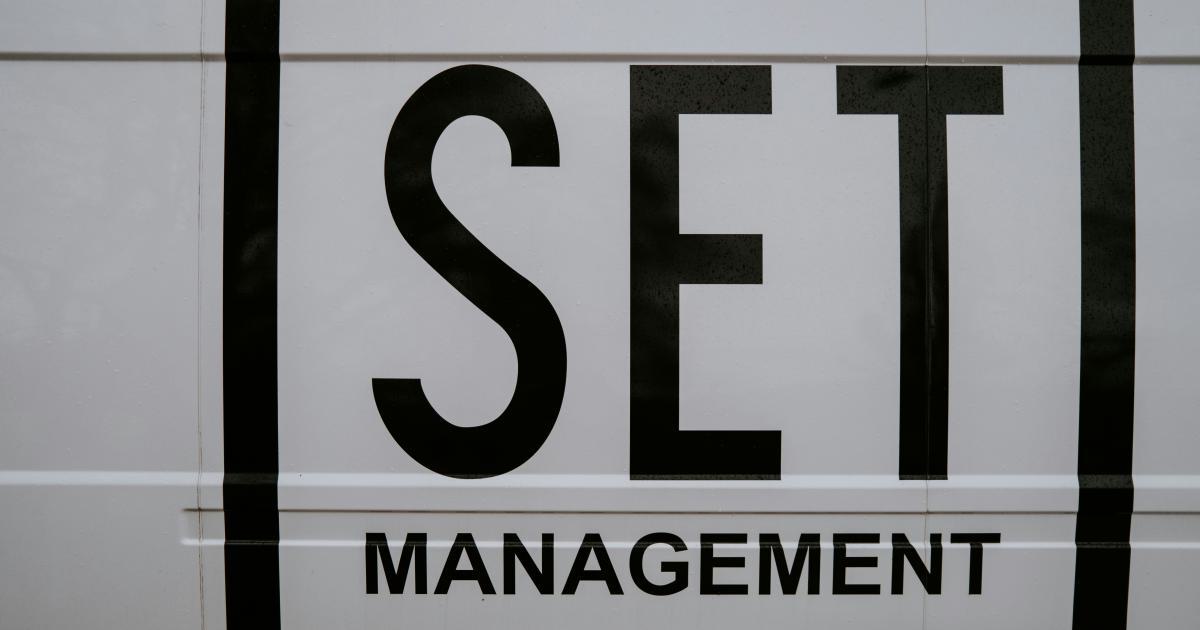Fueling Growth with a Consistent Content Governance Model


Understanding the Importance of Content Governance
In the rapidly evolving digital landscape, creating and maintaining a consistent, high-quality content strategy has become essential for businesses of all sizes. As the volume and diversity of content continue to expand, organizations are increasingly recognizing the need for a structured approach to content governance. This comprehensive framework ensures that content aligns with the organization's strategic objectives, adheres to brand guidelines, and delivers a seamless user experience.

The concept of content governance encompasses the policies, processes, and technologies that guide the creation, management, and distribution of content across an organization. By establishing a consistent content governance model, businesses can unlock significant benefits, including:
Improved Brand Consistency
A robust content governance model ensures that all content, regardless of its source or format, adheres to the organization's brand identity, tonality, and visual standards. This consistency strengthens brand recognition, enhances trust, and creates a cohesive customer experience.
Enhanced Content Quality
Effective content governance introduces quality control mechanisms, such as content reviews, editorial guidelines, and style checks. This helps to eliminate errors, maintain accuracy, and elevate the overall quality of the organization's content assets.
Streamlined Content Workflows
A well-defined content governance framework streamlines content creation, approval, and publishing processes. This increases efficiency, reduces redundancies, and enables teams to collaborate more effectively, ultimately accelerating time-to-market.
Reduced Compliance Risks
In industries with strict regulatory requirements, content governance ensures that all content adheres to relevant laws, regulations, and industry standards. This mitigates the risk of non-compliance and safeguards the organization's reputation.
Improved Content Performance
By establishing clear performance metrics, content governance models enable organizations to measure the effectiveness of their content strategies. This data-driven approach supports continuous improvement and helps to optimize content for maximum engagement and impact.
Establishing a Consistent Content Governance Model
Developing a robust content governance model requires a strategic, step-by-step approach. Here's a comprehensive framework to help organizations create and implement a consistent content governance system:
1. Define Content Governance Objectives
The first step in establishing a content governance model is to clearly define the organization's content governance objectives. These objectives should align with the overall business strategy and address the specific challenges or opportunities the organization faces. Common content governance objectives include:
- Ensuring brand consistency across all content
- Improving content quality and accuracy
- Streamlining content workflows and processes
- Mitigating compliance risks
- Enhancing content performance and measurability
By establishing clear objectives, organizations can develop a tailored content governance model that addresses their unique needs.

2. Assess the Current Content Landscape
Before implementing a new content governance model, it's crucial to conduct a comprehensive audit of the organization's existing content assets, workflows, and challenges. This assessment should include:
- Inventory of all content types, formats, and channels
- Evaluation of content quality, consistency, and performance
- Identification of content creation and approval processes
- Assessment of content-related roles, responsibilities, and skills
- Review of existing content governance policies and guidelines
This in-depth analysis will provide a clear understanding of the organization's content maturity and inform the development of the new content governance model.

3. Establish Content Governance Policies and Guidelines
Based on the insights gathered during the content landscape assessment, the next step is to develop a set of comprehensive content governance policies and guidelines. These guidelines should cover all aspects of content creation, management, and distribution, including:
- Brand and style guidelines
- Content creation and approval workflows
- Content review and quality assurance processes
- Content distribution and publishing channels
- Content performance metrics and KPIs
- Roles, responsibilities, and content ownership
- Compliance and regulatory requirements
These policies and guidelines will serve as the foundation for the organization's content governance model, ensuring consistent, high-quality content across the enterprise.

4. Implement Content Governance Processes and Workflows
With the content governance policies and guidelines in place, the organization can then establish the necessary processes and workflows to put the model into practice. This includes:
- Defining content creation and approval processes
- Implementing content review and quality assurance checkpoints
- Establishing content distribution and publishing workflows
- Integrating content governance into existing project management systems
- Automating repetitive tasks and streamlining manual processes
By designing efficient, scalable content governance workflows, organizations can ensure that all content adheres to the established policies and guidelines, reducing errors and improving productivity.

5. Empower Content Teams and Stakeholders
The success of a content governance model relies heavily on the engagement and buy-in of all stakeholders, from content creators to executive leadership. To ensure widespread adoption, organizations should:
- Provide comprehensive training on the content governance model and its implementation
- Clearly define roles, responsibilities, and decision-making authority for each stakeholder group
- Establish communication channels and feedback loops to address questions and concerns
- Recognize and celebrate teams and individuals who demonstrate strong content governance practices
By empowering content teams and stakeholders, organizations can foster a culture of content excellence and drive continuous improvement in their content governance model.

6. Monitor, Measure, and Continuously Improve
Effective content governance is an ongoing process, not a one-time initiative. To ensure the long-term success of the content governance model, organizations should:
- Establish key performance indicators (KPIs) to measure the effectiveness of the model
- Regularly monitor content performance, quality, and compliance
- Analyze data and gather feedback from stakeholders to identify areas for improvement
- Continuously refine the content governance policies, processes, and workflows based on learnings
- Celebrate successes and share best practices across the organization
By continuously monitoring, measuring, and improving the content governance model, organizations can ensure that their content strategies remain agile, effective, and aligned with evolving business needs.

The Role of Technology in Content Governance
While the core elements of a content governance model are rooted in policies, processes, and people, technology plays a crucial role in enabling and enhancing the effectiveness of the entire system. Here are some key ways that technology can support content governance:
Content Management Systems (CMS)
A robust CMS serves as the foundation for a content governance model, providing a centralized platform for content creation, review, approval, and distribution. Advanced CMS solutions often include built-in version control, workflow management, and content auditing capabilities, which streamline the content governance process.

Digital Asset Management (DAM)
A comprehensive DAM system helps organizations manage and govern their growing library of digital assets, such as images, videos, and graphics. By centralizing asset storage, metadata tagging, and distribution, a DAM system ensures brand consistency and simplifies content creation workflows.

Collaboration and Workflow Tools
Implementing collaboration and workflow tools, such as project management platforms, document sharing systems, and real-time communication apps, can greatly enhance the efficiency and transparency of content governance processes. These tools facilitate team collaboration, automate approval flows, and provide visibility into the content lifecycle.

Content Analytics and Reporting
To measure the performance and impact of the content governance model, organizations should leverage robust analytics and reporting tools. These solutions provide valuable insights into content engagement, user behavior, and campaign effectiveness, enabling data-driven decision-making and continuous improvement.

Artificial Intelligence and Machine Learning
Emerging technologies like AI and ML can further enhance content governance by automating repetitive tasks, improving content quality, and optimizing content performance. For example, AI-powered content recommendations, automated text editing, and predictive content analytics can streamline the content governance process and drive better business outcomes.

By strategically integrating technology into their content governance model, organizations can create a more efficient, scalable, and data-driven approach to managing their content assets.
Overcoming Common Challenges in Content Governance
While the benefits of a consistent content governance model are clear, implementing and maintaining such a system is not without its challenges. Here are some common obstacles organizations may face and strategies to overcome them:
Siloed Content Creation and Distribution
In large or decentralized organizations, content is often created and distributed in silos, leading to inconsistencies, redundancies, and a lack of centralized control. To address this challenge, organizations should:
- Establish clear content ownership and governance structures
- Implement enterprise-wide content creation and distribution policies
- Leverage centralized content management and distribution platforms

Resistance to Change
Implementing a new content governance model can often face resistance from teams and stakeholders who are accustomed to their existing workflows and processes. To overcome this challenge, organizations should:
- Clearly communicate the benefits and vision of the content governance model
- Involve stakeholders in the development and rollout of the new system
- Provide comprehensive training and support to ease the transition
- Celebrate early adopters and success stories to inspire broader engagement

Lack of Content Governance Expertise
Many organizations may lack the internal expertise required to develop and maintain a robust content governance model. In such cases, they should consider:
- Hiring dedicated content governance specialists or forming a cross-functional team
- Partnering with external consultants or agencies with content governance expertise
- Investing in comprehensive training and upskilling for existing content teams

Measuring Content Governance Effectiveness
Quantifying the impact of a content governance model can be challenging, as the benefits may not always be immediately apparent. To address this, organizations should:
- Establish clear, measurable KPIs aligned with their content governance objectives
- Implement comprehensive content analytics and reporting capabilities
- Regularly review and refine the KPIs to ensure they remain relevant and valuable

By proactively addressing these common challenges, organizations can ensure the successful implementation and long-term sustainability of their content governance model.
Conclusion
In today's dynamic digital landscape, a consistent content governance model has become essential for businesses seeking to drive growth, strengthen their brand, and deliver exceptional customer experiences. By establishing a comprehensive framework for content creation, management, and distribution, organizations can unlock a range of benefits, including improved brand consistency, enhanced content quality, streamlined workflows, and reduced compliance risks.

The key to success lies in a strategic, step-by-step approach to content governance, encompassing the definition of clear objectives, the assessment of the current content landscape, the establishment of robust policies and guidelines, the implementation of efficient workflows, the empowerment of content teams, and the continuous monitoring and improvement of the entire system. Furthermore, the strategic integration of technology can greatly enhance the effectiveness and scalability of the content governance model.
While implementing a content governance model may present some challenges, such as siloed content creation, resistance to change, and the need for specialized expertise, organizations can overcome these obstacles by adopting a proactive and collaborative approach. By embracing a culture of content excellence and continuously refining their content governance practices, businesses can position themselves for long-term growth and success in the digital age.